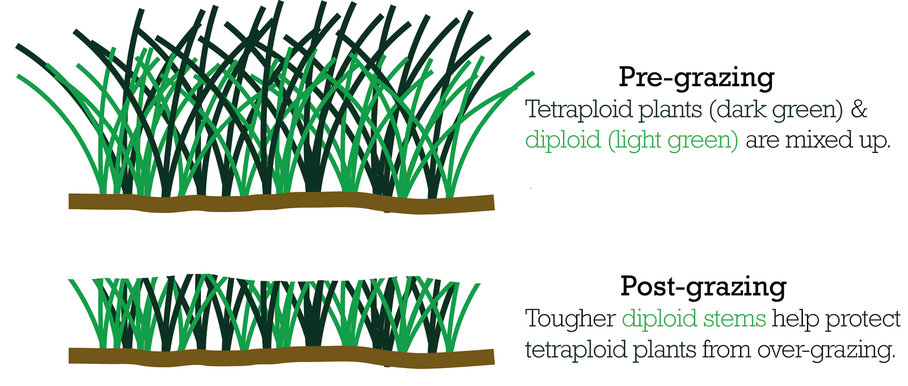Mixing tetraploid & diploid ryegrass
Background
Tetraploid/diploid mixes fit a range of farm systems. They are more persistent than a straight tetraploid pasture, because diploid plants protect the tetraploid.
On many farms the tetraploid/diploid perennial ryegrass mix is now the norm, striking a near-ideal balance between pasture palatability and robustness, growing more energy (MJ ME/ha) and being easier to manage than straight diploid perennial ryegrass.
Tetraploid perennial ryegrass, like 4front, has excellent DM yield and year-round growth. But being so palatable, many farmers have struggled to avoid over grazing and achieve the persistence they want. Adding a denser diploid ryegrass to the mix changes the dynamics.

The tetraploid/diploid mix is an average of the two types, denser and more robust than a straight tetraploid, and more palatable than a straight diploid.
Palatability & stems
The increased palatability of the pasture is due to 4front's soft stems. These improve animal performance and hold quality even at high covers (e.g. 3500-3600 kg DM/ha) making them easy to graze.
Diploid protects from overgrazing
The increased palatability of the pasture is due to 4front's soft stems. These improve animal performance and hold quality even at high covers (e.g. 3500-3600 kg DM/ha) making them easy to graze.

Sowing rate
Barenbrug has tested different tetraploid/diploid perennial ryegrass mixes. We recommend sowing half the normal rate of each cultivar, e.g.15 kg/ha of tetraploid 4front (half of 30 kg/ha) plus 10 kg/ha of a diploid like Maxsyn or Array (half of 20 kg/ha).

